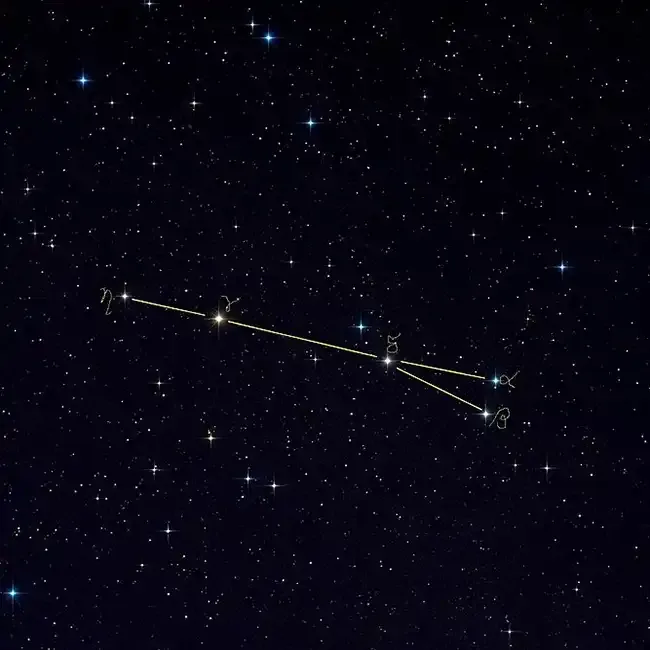
Sagitta is a small and faint constellation located in the northern sky. Its name means "arrow" in Latin, and it is one of the smallest constellations in the night sky, ranking third smallest overall. Despite its size, Sagitta has been known since ancient times and is included in the 48 constellations listed by the Greek astronomer Ptolemy.
Key Features
Sagitta is not particularly bright or prominent, but it is easily recognizable due to its distinctive shape, which resembles an arrow. The constellation consists of a simple line of four stars forming the shaft and tip of the arrow. Sagitta is bordered by the constellations Vulpecula, Hercules, Aquila, and Delphinus.
Mythology
In Greek mythology, Sagitta is often associated with the arrow that Hercules used to kill the eagle that tormented Prometheus, or alternatively, the arrow that Apollo used to kill the Cyclopes. Due to its simplicity and small size, there are fewer myths and legends surrounding Sagitta compared to more prominent constellations.
Notable Stars
The brightest star in Sagitta is Gamma Sagittae, a magnitude 3.5 red giant star located about 258 light-years from Earth. Other notable stars include Delta Sagittae, a binary star system, and Alpha Sagittae, a yellow giant. Despite their relative faintness, these stars contribute to the arrow shape of the constellation.
Visibility
Sagitta is best observed in the summer months in the Northern Hemisphere, particularly in July and August. It is located within the Milky Way, which makes it easier to spot against the backdrop of the rich star fields in this region of the sky. The constellation can be seen between latitudes 90° and -70°, making it visible to most of the world's population.
Tips for Observing
To observe Sagitta, it’s best to find a dark location away from city lights, as its stars are faint and can be difficult to see in light-polluted areas. Start by locating the more prominent constellation of Aquila and its bright star Altair. Sagitta is located just north of Aquila and south of the bright star Vega in the constellation Lyra. A pair of binoculars or a small telescope will enhance the view and make the constellation's stars more apparent.
